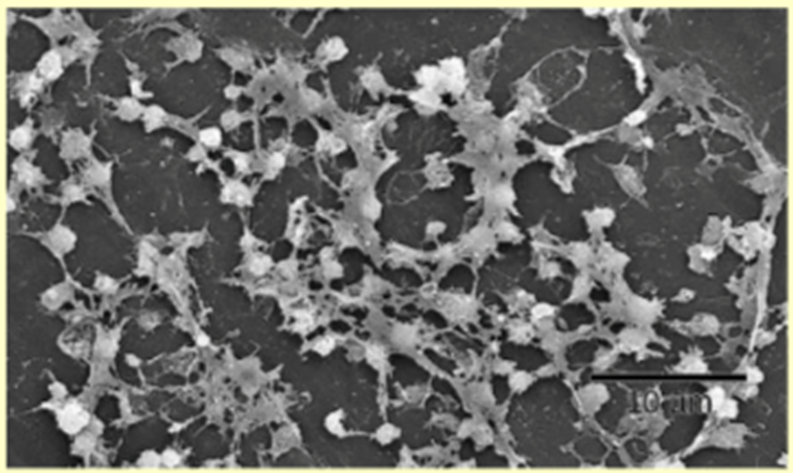Oncologists (medical doctors who treat cancer patients) routinely take biopsies (samples) of tissue from patients to determine whether the tissue is cancerous or not. What would be the best technique to use to determine whether cells from the tissue
sample are cancerous?
A) Count the number of chromosomes in the cells from the tissue sample and compare to the number of chromosomes in noncancerous cells from the patient.
B) Add cells from the tissue sample to a cell culture dish and compare their growth against a sample of noncancerous cells from the patient.
C) Measure the amount of DNA in G1 in the cells from the tissue sample and compare it to the amount of DNA in G2 in noncancerous cells from the patient.
D) Add cells from the tissue sample to a rat to see whether the rat develops cancer or not.
Answer: B
You might also like to view...
The Staphylococcus aureus bacteria shown in the image below form biofilms in medical equipment. Bacteria such as this use quorum sensing to delay the production of toxins until the colony has reached a specific size. What advantage does this have over producing toxins immediately?

a. The toxins produced by bacterial biofilms are polymer chains that cannot be synthesized within individual bacteria.
b. Bacteria require the additional time to develop immunity against the toxins they release, which are otherwise fatal.
c. Quorum sensing ensures that the colony can remain undetected until it is large enough to damage or destroy its host.
d. Biofilms are capable of rudimentary intelligence via neural networking behavior when sufficient bacteria are present.
The fly on the right has a mutation in a(n)
1.master gene.
2.activator.
3.enhancer.
4.homeotic gene.
If, someday, an archaean cell is discovered whose rRNA sequence is more similar to that of humans than the sequence of mouse rRNA is to that of humans, the best explanation for this apparent discrepancy would be _____
A) homology B) homoplasy C) common ancestry D) retro-evolution by humans
Most symptoms of endotoxins can be treated with administration of anti-endotoxin antibodies
Indicate whether the statement is true or false